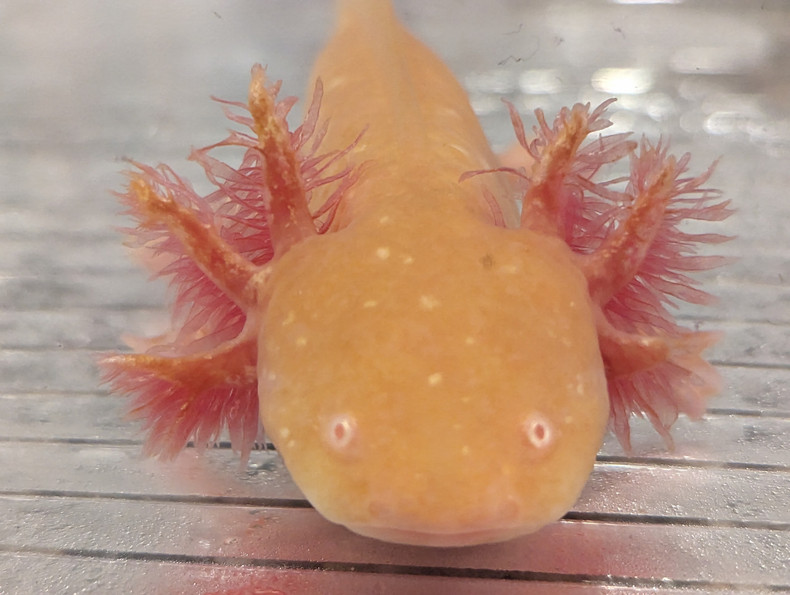Deep within the waters of the ancient lakes and canals of Mexico lies a creature that seems to have leapt straight out of a fairy tale—the axolotl. With its unique appearance and remarkable regenerative abilities, this small aquatic salamander has captured the fascination of scientists and enthusiasts alike. In this article, we delve into the enchanting world of axolotls, exploring their biology, behavior, and the growing conservation efforts to protect these incredible creatures.
1. A Marvel of Nature's Design: Axolotls, scientifically known as Ambystoma mexicanum, are amphibians native to the lakes and canals of Mexico City. They possess a captivating appearance, characterized by their feathery external gills, wide grinning mouth, and endearing smile-like expression. Axolotls come in various colors, including shades of brown, black, gray, and even a rare pink hue, known as leucistic.
2. Aquatic Perfection: One of the most distinctive features of axolotls is their unique ability to remain aquatic throughout their entire lives, unlike other amphibians that undergo metamorphosis into terrestrial adults. Axolotls retain their larval characteristics, including their gills, allowing them to breathe underwater. This remarkable adaptation, called neoteny, has made them highly specialized for their aquatic environment.
3. The Power of Regeneration: Axolotls possess an extraordinary ability to regenerate lost or damaged body parts—a trait that has captivated the attention of scientists for years. Unlike humans, axolotls can regrow entire limbs, spinal cord tissue, and even portions of their heart and brain. This remarkable regenerative capability has made them invaluable in scientific research, offering insights into the potential for regenerative medicine and tissue engineering.
4. Habitat and Behavior: Axolotls are native to the Xochimilco canals and Lake Chalco in Mexico, though their numbers have significantly declined due to habitat loss and pollution. They are primarily nocturnal creatures, spending their days hiding in the vegetation or submerged logs and emerging at night to hunt for small invertebrates, worms, and even small fish. Axolotls are relatively docile and well-suited to aquarium environments, making them popular pets among amphibian enthusiasts.
5. Conservation Efforts: The axolotl population has been in decline in recent years due to urbanization, pollution, and the introduction of non-native species, such as tilapia and carp, which compete for resources. Recognizing the importance of conserving this unique species, both within its natural habitat and through captive breeding programs, various organizations, research institutions, and conservationists are working tirelessly to protect and restore axolotl populations.
6. Captivating the Imagination: Beyond their scientific significance, axolotls have captured the hearts of many as captivating symbols of resilience and uniqueness. These adorable creatures have inspired artists, writers, and even popular culture, featuring prominently in mythology and folklore. Their whimsical appearance and extraordinary regenerative abilities make them a subject of wonder and intrigue, leaving a lasting impression on those who encounter them.
Conclusion: In the enchanting world of axolotls, nature has crafted a creature unlike any other—a salamander that defies expectations and unlocks the secrets of regenerative biology. From their charming appearance to their exceptional abilities, axolotls have become ambassadors of hope, reminding us of the incredible diversity and resilience of life on our planet. As we continue to learn more about these captivating creatures, let us strive to protect their fragile habitats and ensure their continued existence for generations to come.
Check out live axolotls for sale at www.TheMottledLotl.com

